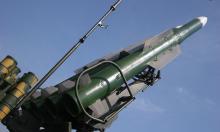65th anniversary of "severny polyus," the world's first floating station
May 21 is the 65th anniversary of the world's first floating station. On this day in 1937, Russia set up a camp on an ice-floe and called it Severny Polyus /"North Pole"/ station. Four people -- Ivan Papanin, Pyotr Shirshov, Yevgeny Fyodorov, and Ernst Krenkel -- spent 274 days on the ice-floe, exploring the Arctic basin /which was, at that time, a "closed book" for Russian scientists/ and sending in weather reports every 6 hours, related Valery Lukin, the head of the Russian Antarctic Expedition. The second floating station was set up in 1950, after World War II. Since 1954, such stations were set up on a regular basis. During the "cold war" period, Russia and the USA regarded the Arctic basin as the most likely theater of war operations and instructed their people on floating stations to spend less time on scientific research and more on protection of their country's defence interests. Specialists were engaged to heed to the needs of the undersea fleet and work out methods of detecting the enemy's submarines in Arctic waters. The last floating station, Severny Polyus-31, was closed in 1991 because of the country's financial crisis.
Subscribe to Pravda.Ru Telegram channel, Facebook, RSS!





